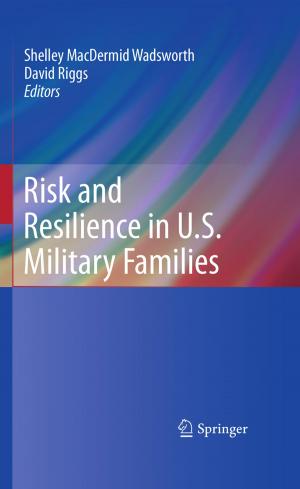Lifespan Perspectives on Natural Disasters
Coping with Katrina, Rita, and Other Storms
Nonfiction, Social & Cultural Studies, Social Science, Social Work, Health & Well Being, Psychology, Clinical Psychology, Medical| Author: | ISBN: | 9781441903938 | |
| Publisher: | Springer New York | Publication: | July 9, 2009 |
| Imprint: | Springer | Language: | English |
| Author: | |
| ISBN: | 9781441903938 |
| Publisher: | Springer New York |
| Publication: | July 9, 2009 |
| Imprint: | Springer |
| Language: | English |
Some of our most disturbing images of Hurricane Katrina involve the very old, trapped in flooded nursing homes, and the very young, sick in toxic trailers. Using the Katrina-Rita nexus as its reference point, Lifespan Perspectives on Natural Disasters takes the developmental long view on human strengths and vulnerabilities during large-scale devastation and crisis. An expert panel of behavioral scientists and first responders analyzes the psychological impact of natural disasters on—and coping faculties associated with—children, adolescents, and young, middle-aged, older, young-old and late-life oldest-old adults. This timely information is invaluable both to mental health service providers and to those tasked with developing age-appropriate disaster preparedness, intervention, and recovery programs. In addition, the book references other deadly storms as well as other major catastrophic events (e.g., the September 11 attacks, the Indian Ocean Tsunami), and includes such topics as:
- Young children’s understanding of hurricanes.
- Positive adjustment in youth after Katrina.
- How families make meaning out of disaster.
- Disaster recovery in the workplace.
- Recovery services for the frail elderly.
- Coping and health in late life.
- Preparation and training mental health personnel for disasters.
Unique in the disaster literature, Lifespan Perspectives on Natural Disasters serves as a research reference and idea book for professionals and graduate-level students in psychology, social work, and disaster preparedness and services.
Some of our most disturbing images of Hurricane Katrina involve the very old, trapped in flooded nursing homes, and the very young, sick in toxic trailers. Using the Katrina-Rita nexus as its reference point, Lifespan Perspectives on Natural Disasters takes the developmental long view on human strengths and vulnerabilities during large-scale devastation and crisis. An expert panel of behavioral scientists and first responders analyzes the psychological impact of natural disasters on—and coping faculties associated with—children, adolescents, and young, middle-aged, older, young-old and late-life oldest-old adults. This timely information is invaluable both to mental health service providers and to those tasked with developing age-appropriate disaster preparedness, intervention, and recovery programs. In addition, the book references other deadly storms as well as other major catastrophic events (e.g., the September 11 attacks, the Indian Ocean Tsunami), and includes such topics as:
- Young children’s understanding of hurricanes.
- Positive adjustment in youth after Katrina.
- How families make meaning out of disaster.
- Disaster recovery in the workplace.
- Recovery services for the frail elderly.
- Coping and health in late life.
- Preparation and training mental health personnel for disasters.
Unique in the disaster literature, Lifespan Perspectives on Natural Disasters serves as a research reference and idea book for professionals and graduate-level students in psychology, social work, and disaster preparedness and services.















